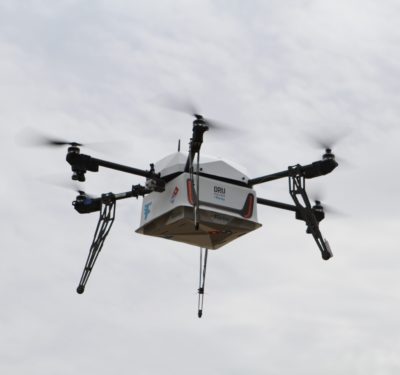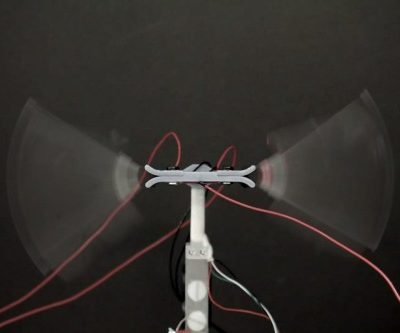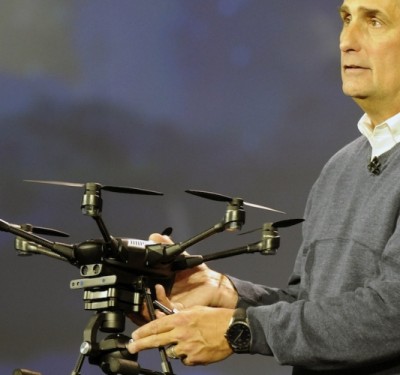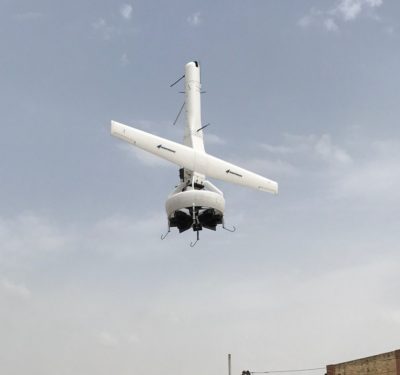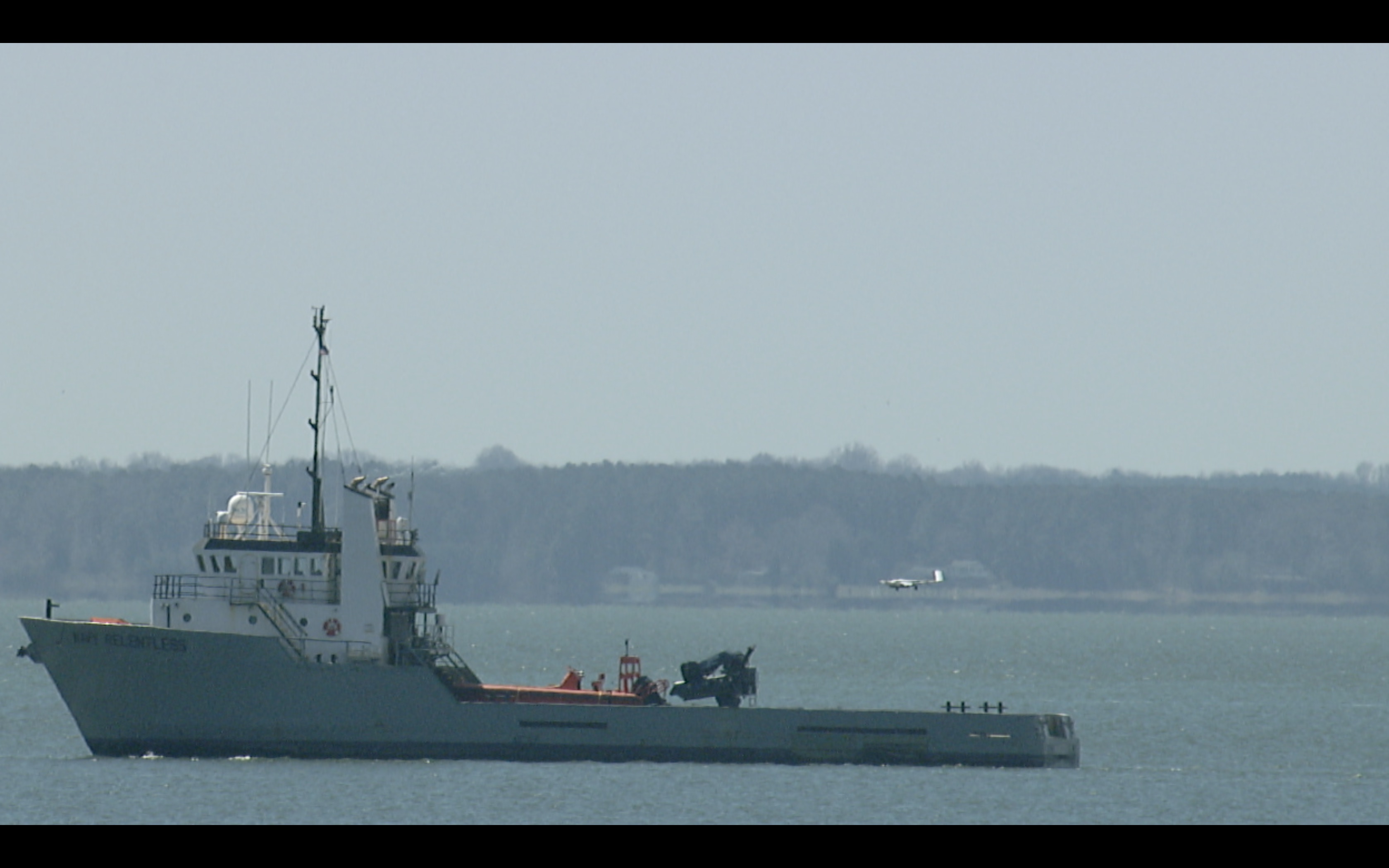
After countless bumper-to-bumper commutes across California’s Silicon Valley, Charles Acknin arrived at the common conclusion that the transportation system is broken. Next, he did something a lot less common—he embarked on a mission to fix it.
In 2017, inspired by the growth he was seeing in unmanned aviation and advancements in energy storage and electric propulsion, Acknin co-founded Skyways Air Transportation Inc. with the goal of developing and delivering a new form of personal day-to-day air transportation.
What he likely didn’t anticipate was that unmanned cargo delivery would become a critical step toward his vision, and that the Navy would provide an ideal testing opportunity to advance it.
This proved to be the case in March 2019 when Skyways successfully completed one of the industry’s first fully autonomous cargo resupply flights to a Naval vessel on the Patuxent River in Maryland as part of the Autonomous Cargo UAS Experiment hosted by the U.S. Naval Air Systems Command.
Acknin says his team was up for the challenge of the experiment, which required the ability to autonomously deliver cargo with an unmanned aerial system between ship and shore locations.
“We’re 100 percent focused on transportation, so we already had a UAS solution that met 75 percent of the program specifications before we even knew about the experiment,” he says.
In short, they already had a platform and the software—they just needed the proving ground.
Shore-to-Ship-to-Shore
While the Skyways team was already well equipped, preparing for the mission took months of creativity, testing and planning.
It was technologically daunting, calling for an unmanned aerial vehicle (UAV) to autonomously navigate and transport a 20-pound payload to a moving vessel in open water 25 nautical miles away. The UAV then had to autonomously land aboard the vessel, launch from the vessel with the same payload and return to its initial shore-based launch site.
Additionally, the UAV had to make the round trip without re-fueling, while maintaining an airspeed no less than 40 knots and an altitude no greater than 2,000 feet above ground level. It had to launch and recover without any mechanical launching or recovery equipment—and 90 percent of the flight had to be flown beyond visual line of sight (BVLOS).
“It was a high-risk experiment that involved long range and heavy payloads,” says Acknin. “We’re talking 20 pounds compared to the average three to five pounds. So, this challenge required pulling off a combination of difficult things that an average drone can barely do.”
To get the job done, Skyways’ UAV had a wingspan of 18.5 feet and weighed 145 pounds All Up Weight when loaded with batteries and max payload. Adjusted for this particular mission, the UAV had a flying range of 65 miles and max cruising speed of 58 miles per hour.
When designing the frame, Skyways relied on a range of off-the-shelf solutions. The company leveraged its network of suppliers for components such as iridium satellite communication, barometers, LiDAR, laser range finders and U-blox chips, using a custom circuit board to integrate everything together.
The team also relied on multiple redundancies to ensure success, particularly when it came to vertical takeoff and landing (VTOL) propulsion.
“We used an octo-quad with eight VTOL motors, which allow us to successfully recover from any potential cruise propulsion failures by swapping into VTOL mode,” says Jace McCown, flight test engineer and chief pilot at Skyways. “They’re essentially our parachute.”
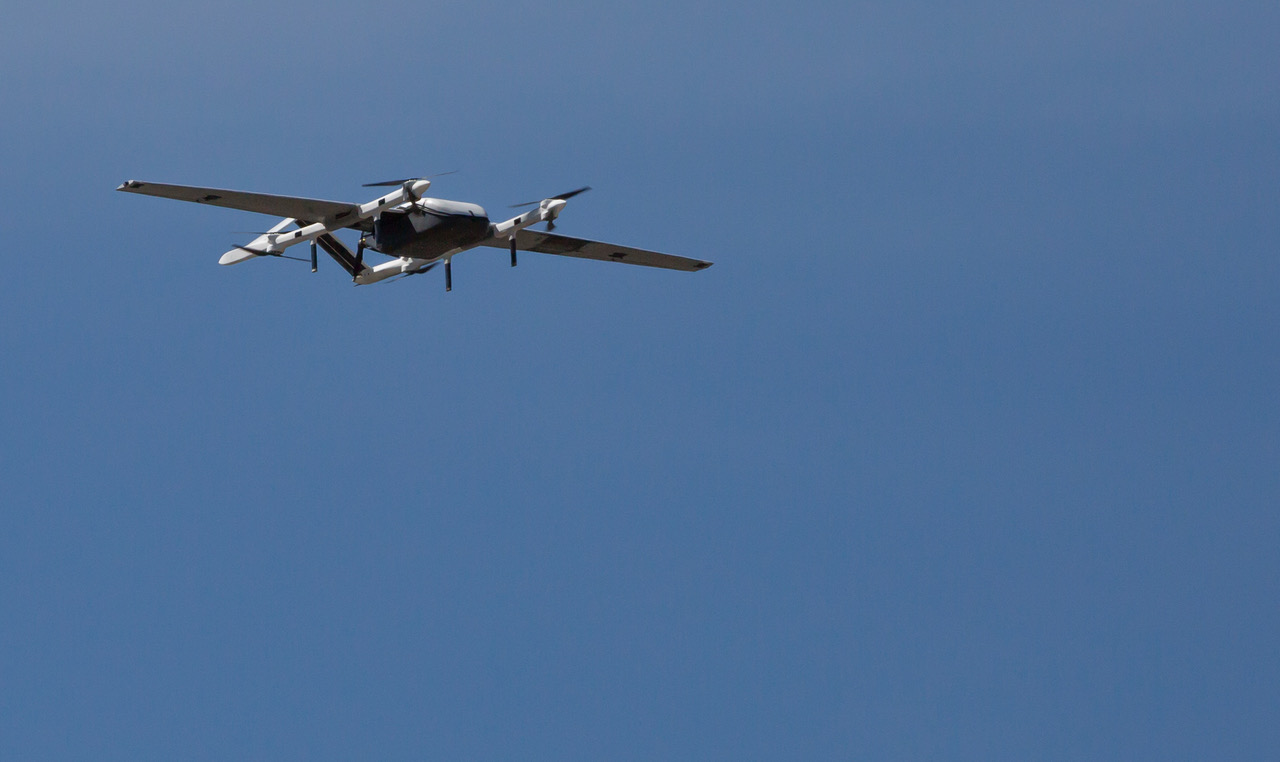
Courtesy US Navy
The team also needed satellite communication and the ability to land on a moving ship deck. The Skyways platform incorporates an on-board beacon that picks up the ship signal and locks onto the target as the unmanned aerial system (UAS) closes in on the moving ship. They also used a Ping2020i full range ADS-B transceiver equipped with a Global Positioning System (GPS) and an off-the-shelf camera with high mega pixel count that is switched on during landing.
“It was an interesting process because we had to come up with things and pull them out of our own pockets,” says McCown. “We wrote software, modified hardware, changed our systems and did a lot of flight testing to ensure everything would work together. Ultimately, we knew we had just one shot at this.”
The collaboration paid off. In less than an hour, the Skyways UAS with its 20-pound payload took off from its onshore position, flew 40 miles to the moving vessel, located it as it moved at five knots (with a 12 knot headwind), landed on the designated spot, took off with the payload intact and landed back on shore—all entirely autonomously.
“It was amazing to see the excitement on everyone’s faces when we made the successful landing,” says McCown.
A Clear Flight Path
With an eye always on the horizon, Acknin remains focused on the end goal, knowing advancements in autonomous cargo transportation will one day lead to heavier payloads and his ultimate dream of delivering personal autonomous transportation in the sky.
“We’re taking an incremental approach to this future by using cargo UAVs as a stepping-stone to build up to other forms of transportation, and we’re building the flight time to present our case to the Federal Aviation Administration (FAA),” he says.
Acknin cites recent efforts by Google and Amazon to advance autonomous air transportation forward, and notes recent news regarding the FAA’s green light to UPS, which signaled the first full approval to operate an entire drone delivery airline.
To Acknin, these advancements will pave the way for his future vision.
“All of this is based around, and starts with, the use of large cargo drones,” he says. “Eventually, after a few generations of vehicles we’ll be able to lift hundreds of pounds, and maybe even carry people one day. We’ve always been focused on the possibilities of transportation. “Why would we want to be stuck on the ground in 2D when we could go 3D with air transportation?”


